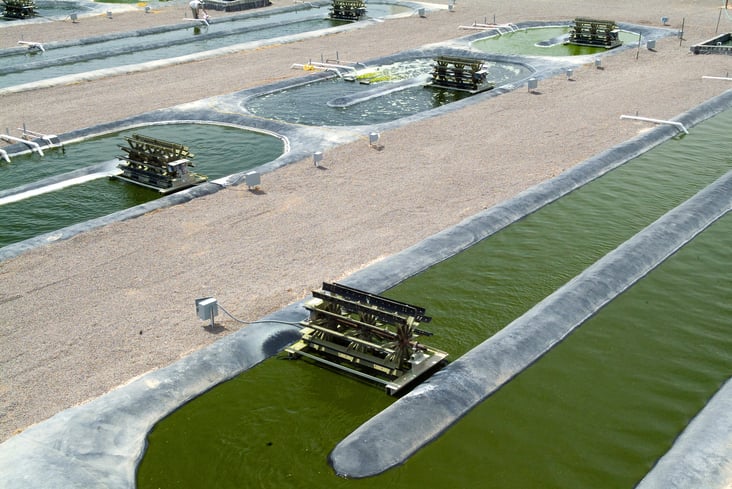This post is one in a series featuring the complete slate of advanced energy technologies outlined in the report This Is Advanced Energy.

Second generation biofuels describes a wide range of fuel pathways that offer one or more advantages over first generation biofuels. The distinguishing characteristics of second generation biofuels are: (a) they use a non-food feedstock (so-called lignocellulosic biomass, such as field crops residues, forest products residues, or fast-growing dedicated energy crops), and (b) the fuel
is a “drop-in” replacement for conventional petroleum-based fuels, meaning there are no limits on blending, or they can be used as is (without blending) in existing vehicles. Some second generation biofuels feature both characteristics, whereas others offer just one. The following are the main types of second generation biofuels in use or under development:
-
Cellulosic Ethanol is produced via fermentation of sugars derived from the cellulose and hemicellulose fractions of lignocellulosic biomass.
-
Biobutanol is made in a process similar to ethanol but with different microorganisms. Currently the fuel yield is lower than with ethanol, but biobutanol can be used as a drop-in replacement for gasoline without blending limits.
-
Biomass to Liquids (BtL) technology starts with gasi cation to produce a synthesis gas (syngas) followed by Fischer-Tropsch catalytic synthesis to gasoline, diesel, and jet fuel.
-
Methanol, Dimethyl Ether (DME),10 and mixed alcohols can also be made from syngas via catalytic synthesis. There are also specialized microorganisms that can ferment syngas into alcohols.
-
Biosynthetic Natural Gas (BioSNG), sometimes called renewable natural gas, can also be made via gasification followed by catalytic methanation and purification. Anaerobic digestion with microorganisms produces a biogas comprised mainly of methane and carbon dioxide that can be puri ed to produce BioSNG. BioSNG can then be used as compressed natural gas (CNG) or liquefied natural gas (LNG) in vehicles or injected into the existing natural gas pipeline network.
-
Hydrotreated Vegetable Oil is a drop-in diesel substitute that has very desirable fuel properties (high cetane, no aromatics, no sulfur).
-
Pyrolysis Oils (sometimes called “biocrude”) are produced by ash pyrolysis (rapid heating to about 1,000°F followed by rapid cooling). Refining and upgrading produces liquid fuels for transportation or stationary applications (boilers, turbines).
-
Hydrogen can be produced from biomass using various conversion technologies, with gasification being the most developed.
Production of second generation biofuels remains small compared to first generation biofuels. In 2014, total production was about 500 million gallons, compared to about 15.5 billion gallons for first generation biofuels. However, there is a burgeoning industry building up around second generation biofuels, with facilities such as Quasar Energy’s anaerobic digester in Columbus, Ohio, producing 3,600 gge of CNG each day using regional food waste and waste bio-solids from the city of Columbus.
Third generation biofuels are less developed than second generation biofuels but offer some potential advantages. Two examples are algal biofuels and synthetic biology. Algal biofuel production is at the early stages of commercialization and scale-up. With algae, the inputs are sunlight, water, carbon dioxide, and nutrients. The algae is grown in large ponds then harvested, de-watered, and crushed to extract algal oils, which are then converted into biofuels using transesterification (as with first generation biodiesel) or hydrotreating, as described above. The two key advantages of algal biofuels are the high yield per acre (up to 10 times higher than with other biofuels), and the fact that algae do not compete for land or potable water with agriculture or forestry, as non-arable lands and non-potable water can be used. In fact, the best locations are in the desert near sources of carbon dioxide, such as adjacent to existing fossil fuel- red power plants, where the CO2-rich stack gases feed the algae farm. Synthetic biology is at an earlier stage of development. The concept is to use genetic modifications to develop plants or microorganisms that can synthesize drop-in fuels directly in their cells.
Second and third generation biofuels offer the same benefits as first generation biofuels, with some additional advantages. Lignocellulosic feedstocks are generally less expensive than food crops and also ameliorate concerns over competition with food supplies and the potential to raise food prices. These feedstocks are abundant, come from a wide range of sources, and can be grown on more marginal land that may not be well suited to traditional food crops. More generally, growth in biofuels markets offers the potential for rural economic development. Finally, “drop-in” fuels reduce the need for investment in new infrastructure and vehicles, and their market potential is not limited by blend-wall restrictions.
